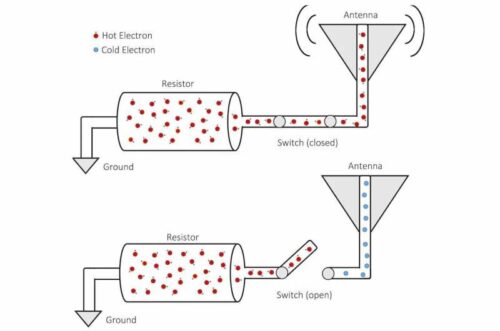Researchers have developed a communication system that barely uses any power to operate for short range communication application.

This new ultra-low power method of communication might not sound true but it is. This new system enables wireless transmission of data simply by opening and closing a switch that connects a resistor to an antenna. No need to send power to the antenna.
Researchers believe that when this technology is combined with techniques for harvesting energy from the environment, could lead to all manner of devices that transmit data, including tiny sensors and implanted medical devices, without needing batteries or other power sources. Apart from the energy needed to flip the switch, no other energy is needed to transmit the information. In our case, the switch is a transistor, an electrically controlled switch with no moving parts that consumes a minuscule amount of power.

In the simplest form of ordinary radio, a switch connects and disconnects a strong electrical signal source—perhaps an oscillator that produces a sine wave fluctuating 2 billion times per second—to the transmit antenna. When the signal source is connected, the antenna produces a radio wave, denoting a 1. When the switch is disconnected, there is no radio wave, indicating a 0. This demonstrated that a powered signal source is not needed. Instead, random thermal noise, present in all electrically conductive materials because of the heat-driven motion of electrons, can take the place of the signal driving the antenna.
Researchers around the world have been working on developing a passive communication method known as backscatter. A backscatter data transmitter looks very similar to our data transmitter device. The difference is that in a backscatter communication system, in addition to the data transmitter and the data receiver, there is a third component that generates a radio wave. The switching performed by the data transmitter has the effect of reflecting that radio wave, which is then picked up at the receiver. However, this new system has lower data rate and range than either backscatter radios or conventional radios.
Reference : Zerina Kapetanovic et al, Communication by means of modulated Johnson noise, Proceedings of the National Academy of Sciences (2022). DOI: 10.1073/pnas.2201337119








